I recently read Lynncady of Turtle Paradise's piece on Five Powerhouse Plants For Spring, here on Substack and found that four of them matched my own likes. The fifth, Cup Flower, silphium perfoliatum, a perennial of prairies, I didn't know at all. Anyway, I was inspired to do something similar, without repeating LynnCady's five, so here are mine.
above: a bank of self seeded Sweet Cicely, lovely delicately cut leaves and umbrellas of small flowers. A Welsh Poppy (yellow flowers, see below) has sneaked in.
Sweet Cicely, myrrhis odorata.
Lyn bought one plant in the 1980's, the mother of many generations as once established, she self-seeded freely and copiously! A deep rooted perennial that pumps up loads of nutrients, loved by pollinators, especially hoverflies, hunting ground of wasps. Unlike some umbelliferae, every part of the plant is edible; the leaves have an aniseed smell and make a great aromatic addition to salads. The seed pods when young and green can be chewed as a mouth freshener. Can grow quite BIG, so give her plenty of room.
One thing we've noticed with other perennials as well as Sweet Cicely, is that it can take several years while they establish before their seeds seem to become really viable, so its well worth giving them time.
above: Ragged Jack Kale, a single plant grown in the polytunnel provides heavy crops leaves more or less throughout the winter and masses of flowering tops from early spring into the summer.
Ragged Jack Kale, brassica oleracea var. viridis. Also known as Russian Kale
This is a relatively mild kale, as in only slightly bitter. Bitters are one of the five tastes that can be distinguished by the human tongue and have been largely excluded from modern vegetables in favour of sweetness. This limits culinary variety and overly sweet plants are more tasty to slugs as they think they're rotting. Ragged Jack is a good introduction to bitters as it is so mild.
In our experience, Ragged Jack is also one of the few (only?) brassicas that breeds true. We leave a few plants to go to seed each year and scatter the seed over the vegetable beds. It now pops up whenever the soil is disturbed, can be grown on where it is or be transplant into the appropriate bed if you are following a rotation.
above: young, self-seeded Ragged Jack transplanted into an annual bed with last years plant seeding in the background.
It can be cropped almost continuously. We eat the leaves through most of the year and then the flowering tops when they appear. By continually harvesting the flower buds before they open (like small broccoli) you can keep them going for a fair while. I usually let one or two have a corner in the polytunnel where they grow BIG and supplement many meals through the winter and early spring.
Regarding bitters and any new foods, we think the gut microbiome plays a big role in our tastes, as in what we like or don't like and it could well be that our gut microbiome are strongly influencing what we choose to eat. So a new food may not liked because we don't have enough of the right gut microbes to digest it. Eating a small quantity for a few days running gives the opportunity for the relevant gut microbes to multiply sufficiently to break down the new food and what at first might have tasted odd or even a bit unpleasant, begins to taste really nice and you want more, more! Or is it that the gut microbes want more, more?
above: A three year old clump of Good King Henry producing numerous flower spikes- delicious when steamed for five minutes.
Good King Henry, chenopodium bonus-henricus.
This is a great perennial, also known as "poor-man's asparagus" or "Lincolnshire spinach" and has been grown in Europe as food for centuries. The origin of the name is not certain, coming either from Henry IV of England who liked it apparently or from ‘Good Henry’, an elfin figure from Saxon folklore, the name being used to distinguish the plant from ‘Bad Henry’, a completely different, poisonous plant, (mercurialis perennis or Dog's Mercury- great name).
It forms a dense clump with thick, quite deep roots and is a great early bite in the spring, like Ragged Jack, with a mild, bitter flavour. You can eat the leaves as spinach but the sprouting flower stems are best; it is said that you can eat them raw but we tend to steam them. As the flowers develop, the stalks become tougher but by putting the whole lot in your mouth you can pull the stalk out and chomp on a mouthful of flower and young seed.
Once the seed has formed you can easily gather large quantities by running your hand up the stalk. It is related to quinoa and can be used in similar ways such as sprouting, adding to stews and soups or, something we've not tried yet, grinding to produce a flour.
Once established, it will self-seed very readily and as we have the space, we've got half a dozen good sized plants providing a regular addition to meals from early spring through to autumn, with younger plants coming on. We find them a great, pest free, low maintenance food plant, benefitting from just an annual mulch, suited to either open situations or hedgerows and ideal for forest gardens.
above: Walking Onion recently moved to an awkward corner in the polytunnel where it can be more easily controlled! Note the bulbs forming on the top of the stems. Also grows well outside here.
Walking Onion, allium x proliferum, also known as Egyptian onions.
From the early 1990's I grew Welsh onions (allium fistulosum), a perennial onion that produced dense clusters of stems like large chives. These were really hardy plants, pest free, easy to grow and productive. I cut up the stems to give a tasty bite to daily salads. However, after nurturing and splitting plants to propagate them over a couple of decades I carelessly allowed them to die out.
Since then I have tried various seeds advertised as Welsh onions but they proved nothing like those original, tenacious beauties. I don't know what the difference is, whether I had a unique variation or what but I gave up on the idea of ever having anything as good.
Enter (literally) the walking onion. I saw this in a friend's polytunnel maybe fifteen years ago and he kindly gave me some bulbs. I stuck them in a side bed in our polytunnel. Wow! Talk about vigorous!
Like the Welsh onion, these are perennial but with even longer, bigger stems like giant chives. Small bulbs form at the top of each stem which then bends down to the ground and the bulbs root to produce new plants and the process continues with the plant in effect walking through the garden, or polytunnel.
Within a few years they had claimed a substantial part of the side bed in the tunnel and I was forced to act, digging them up and transplanting one lot to an awkward corner and sticking the rest outside. Growth is obviously slower outside but they seem perfectly happy there. They're another low maintenance plant, getting just an annual mulch of compost and keeping them weed free.
Like the Welsh onion, I cut the stems up and add them to salads. The small bulbs are also edible and can be eaten raw, cooked, pickled, or dried. They give a strong onion flavour to soups, stews and stir-fries.
above: self-seeded Welsh Poppy. The photo doesn’t do justice to the beautiful gold and deep oranges of the flowers.
Pabi Cymreig, Welsh Poppy, meconopsis cambricum.
OK, it's “just” a flower but its a very lovely, very Welsh, perennial plant with deeply cut, delicate leaves and gold/yellow through to orange flowers. The bright green leaves begin very early in the spring and it soon flowers and continues to do so throughout the summer and into the autumn.
Over the years it develops into large clumps and is loved by bees and other pollinators. It self seeds feely and the seed can be collected easily by tipping them out of the small pods. I scatter the seed pretty much throughout the holding, round buildings and sheds, under fruit trees and I like having at least one going in the polytunnel just for the bursts of colour.
above: another self-seeded Welsh Poppy, this time growing happily with a fern on the shady north side of the house. Note the lovely, delicate leaves.
I first really noticed the Welsh Poppy growing as a thick border of striking gold and orange along the bottom of a friend's house wall and asked if I could have some seed. She told me that you shouldn't give the seed away, it can only be stolen. She then asked me if I wanted a cuppa and disappeared inside whereupon I thievishly gathered seed! It is also said that you mustn't disturb the plant, so only steal the seeds.
Folklore also informs us that the plant provides protection from nefarious spirits and as we have not had any such spirits visit us since I stole the seed, we presume that this is completely true.
Thanks for reading. It strikes me that it would be interesting to hear of similar short lists of favourite, easy to grow plants from other gardeners, with an emphasis on food plants and perennials and compile a useful species list of plants for temperate, forest gardens, borders and edges, suitable for both beginners and seasoned practitioners. Comments always welcome.
Next time I intend to launch another strand of the meta-pata-fiction Konsk, also known as Konsk, the Hexology (there being six books in all). This next thread is called “Heads At The Little Big Farm”. It comes in two parts, the first being “1984”. Sounds a bit ominous? It is... Till then, hwyl! Chris

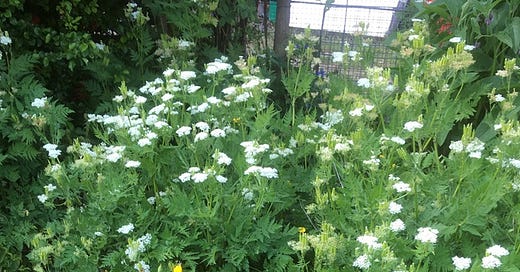



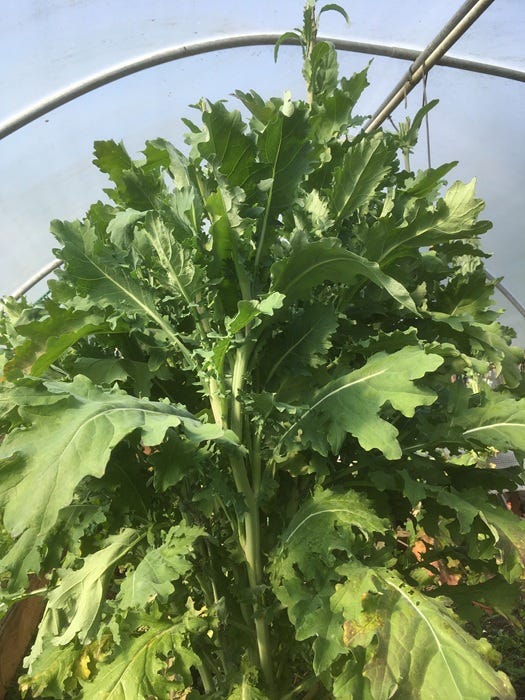
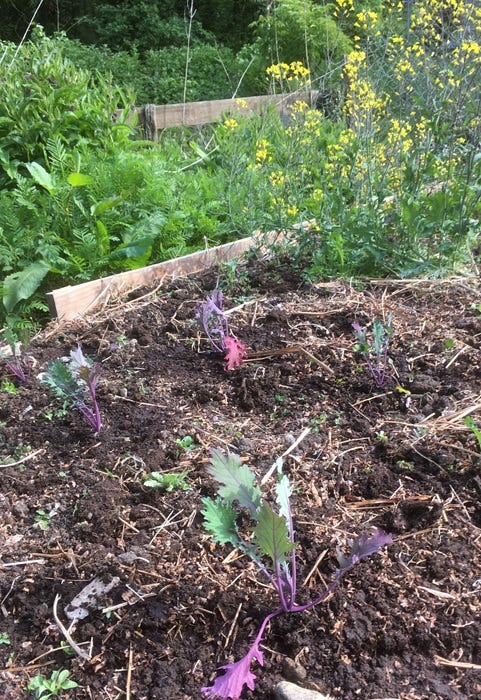
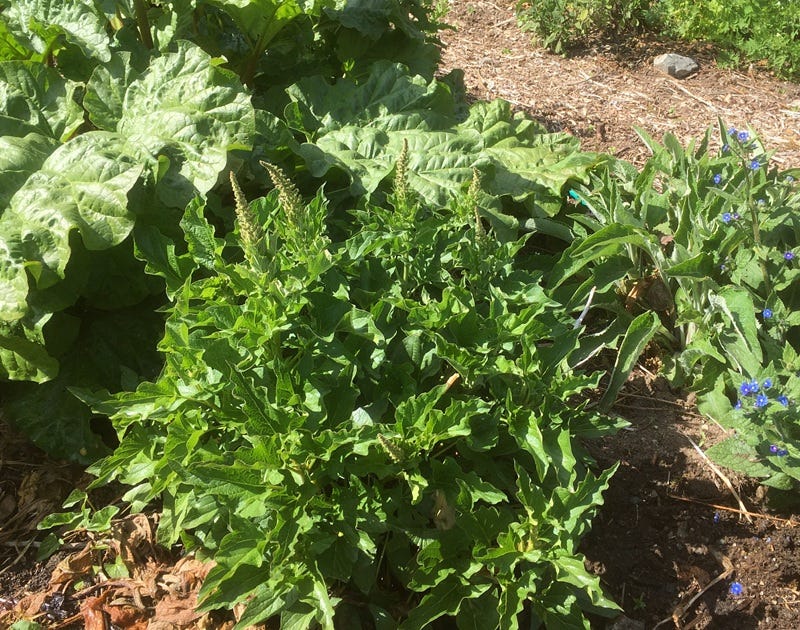
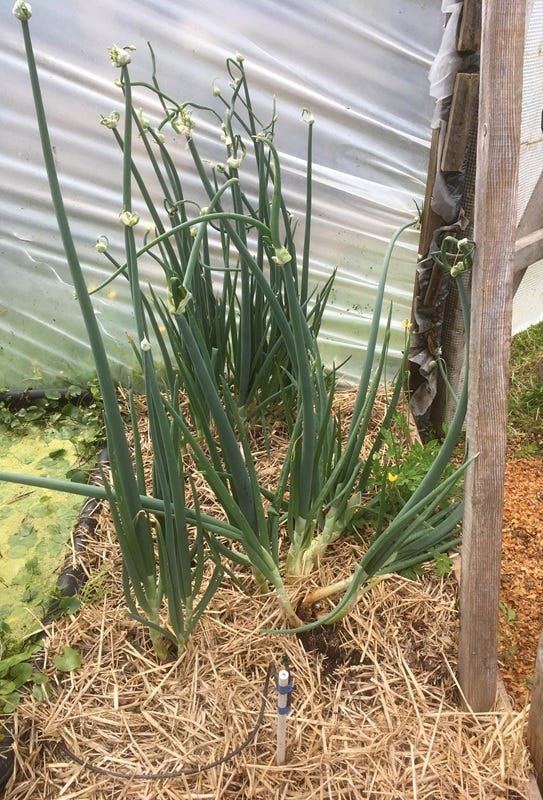
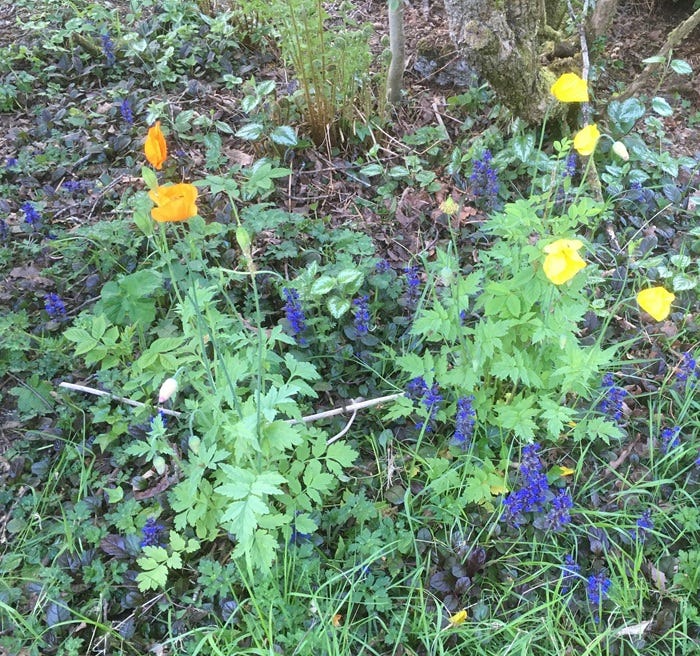

I have a sweet Cicely that you gave some years ago and it's doing well - or I think it is as it's in a bit of the garden I can't get to very easily anymore. I'm just wondering if I should move some to my flower garden in the back where I can see it and use it.
I was given 2 self seeded Sweet Cicely plants by Liz Zorab a couple of weeks ago. I had never tasted it or grown it before but I am hoping they settle in well. I grow Welsh Onions - who knows if they are the same as the ones you lost! I have tried various Kales which have enthusiastically interbred so now I get self seeds popping up everywhere in a variety of shapes! I just weed ouyt any in a bad place. I am also trying to grow Good King Henry from seed - the packet says to be patient so I am hoping it comes. And Welsh Poppies appear in the garden from time to time but not consistently. I wish they would colonise more!